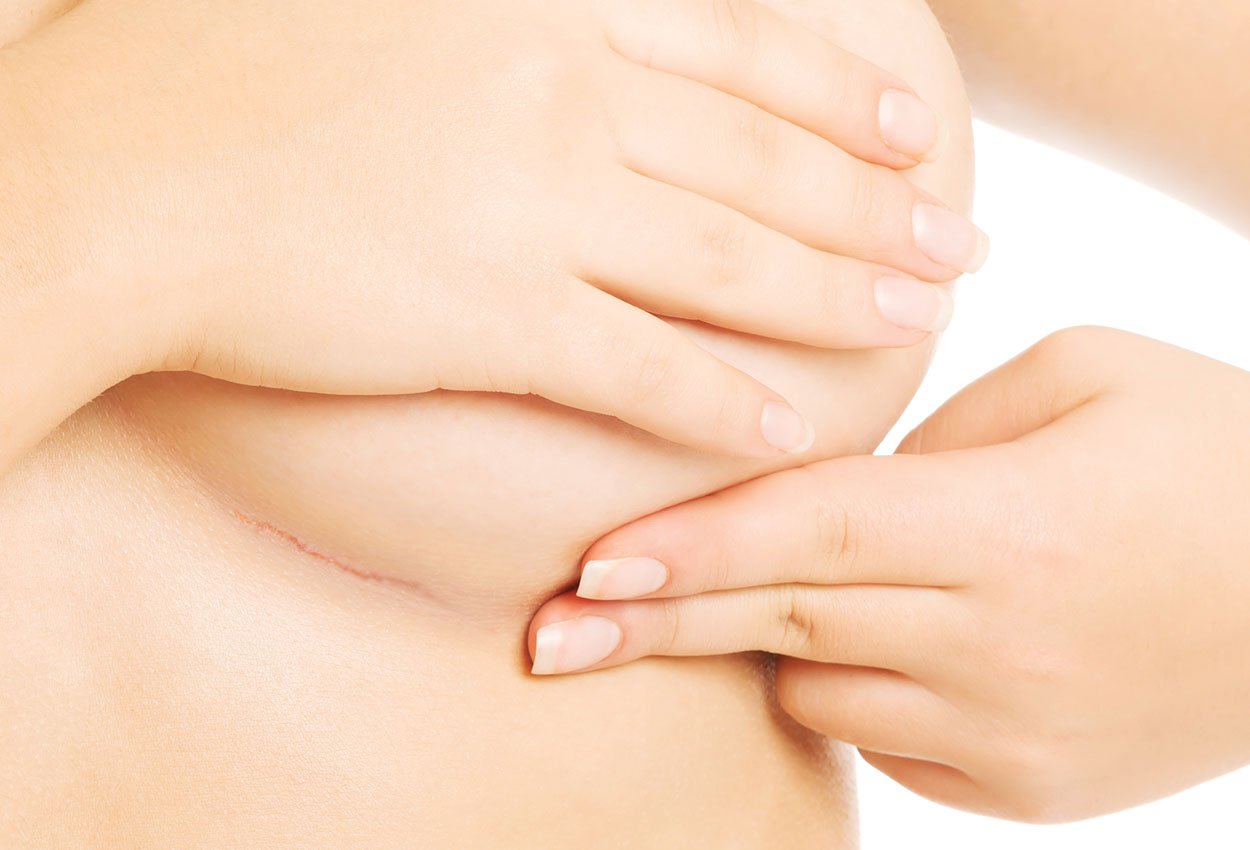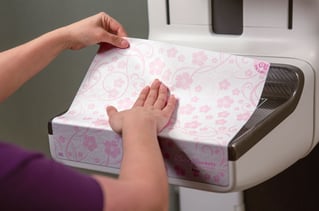
When a patient comes in for her exam, emotions may run high - whether it’s a first-time exam and fear of the unknown, a patient with a history of breast cancer, a patient who finds compression hard to tolerate, or maybe an elderly patient who has difficulty holding her breath during the exam.
And, of course with the COVID-19 pandemic top of mind these days, I believe every woman may have an added concern for their safety.
You know your equipment is sanitized, but when a skin tear unexpectedly occurs as a result of the mammogram, it can increase anxiousness that may impact a patient’s decision to come back for future screening.
Why skin tears happen in mammography
Although the mammography technologist takes the greatest care in positioning a patient’s breast, the skin under the breast may tear.
It may be a result of moisture under the breast or thin skin. Some medications result in sensitive skin, and/or a skin rash or yeast infection under the breast.
Sometimes a skin tear can happen because the breast sticks to the receptor plate and the patient pulls away too quickly after the compression paddle is released.
When a skin tear does occur, what happens next is significant
If a skin tear does occur, it is extremely important that the patient feels cared for. Whether the tear is discovered at the breast center or at home, the center should acknowledge the patient’s feelings and do everything they can to make that patient feel cared for.
To better understand the perception of skin tears between patient and the breast imaging centers, two blind, random, anonymous surveys were administered with 788 patients1 and 222 breast imaging centers2 responding across the United States.
The results were reported in the white paper "The Impact of Skin Tears on Patients and Breast Imaging Centers: Viewpoints from Two Different Perspectives."
Key discoveries of patient vs. breast imaging center - impact of skin tears:
| Skin Tears May Happen More Often Than Commonly Thought |
|---|
| 4.7% of women reported experiencing a skin tear during a mammogram |
| Of the 35.1% of women who discovered their skin tear after they left the imaging center, only 40.5% contacted the facility to let them know |
| On average, imaging centers reported an annual skin tear rate of 0.49%, with some reporting rates as high as 10% or more |
| *How many more skin tears occur that your facility doesn't know about? |
| Significant Tangible Impact on Patients Who Have Skin Tears |
|---|
| 10.8% said they will not go back for another mammogram as a result of their skin tear |
| 18.9% said they delayed their next mammogram |
| 16.2% said they switched to another facility |
| *How might this impact future cancer detection for these women? |
| *How many patients are you losing? |
| Significant Emotional Impact on Patients Who Have Skin Tears |
|---|
| 37.8% said the skin tear has made them more fearful of future mammograms |
| 16.2% said they felt like the imaging center did not care about their skin tear |
| 10.8% were told skin tears are common and therefore they felt "unheard" |
| *Who else do these women talk to about their experience? |
| Significant and Far-Reaching Impact on Imaging Centers |
|---|
| Additional burden on staff and radiologists: marking charts, filling out incident reports, tending to the wound, handling follow-up calls, etc. |
| Patients who are fearful can be more difficult to position and therefore more challenging for technologists3 |
| Patients may delay or forego future mammograms or switch to another facility |
| *How does this affect your workflow? |
| *What's the impact on your revenue? |
| *How does this affect clinical risk? |
The scary truth about skin tears
The survey findings of how many women have either delayed or said they would not go back for another mammogram as a result of a skin tear are particularly troubling when looking at the responses from women under the age of 50:
• 20.8% had delayed their next mammogram
• 12.5% said they would not go back for another mammogram
According to BreastCancer.org, breast cancer in younger women is likely to be more aggressive, and younger women have worse survival rates compared to older women.
Not only is there greater potential clinical impact on younger patients who delay or forego future mammograms because these cancers are more aggressive, but the younger the patient is when the skin tear occurs, the greater the impact on recurring revenue to the facility if the patient delays or foregoes future exams and procedures.
Bella Blankets® help avoid skin tears during a mammogram
 Bella Blankets® protective coverlets for mammography help avoid skin tears by preventing the breast from sticking to the plate during positioning. They also allow the breast to easily slide off the receptor plate once compression is released. As an added benefit, Bella Blankets help to protect existing tears and act as a sanitary barrier between patient and receptor plate.
Bella Blankets® protective coverlets for mammography help avoid skin tears by preventing the breast from sticking to the plate during positioning. They also allow the breast to easily slide off the receptor plate once compression is released. As an added benefit, Bella Blankets help to protect existing tears and act as a sanitary barrier between patient and receptor plate.
Contact your Beekley Medical Account Manager at 1.800.233.5539 or email info@beekley.com to ask about a trial evaluation to experience how Bella Blankets can help you offer an added level of protection between patients.
1 A total of 790 patient responses were received from a blind survey conducted via Survey Monkey® (November 2019); two incomplete responses were excluded from the results.
2 Blind survey distributed to breast imaging centers (November 2019-January 2020); interpretations and exclusions were made where responses to an individual question were not numeric (where required) or the question was misinterpreted.
Related articles:

Melissa Vibberts
Director of Brand Management
